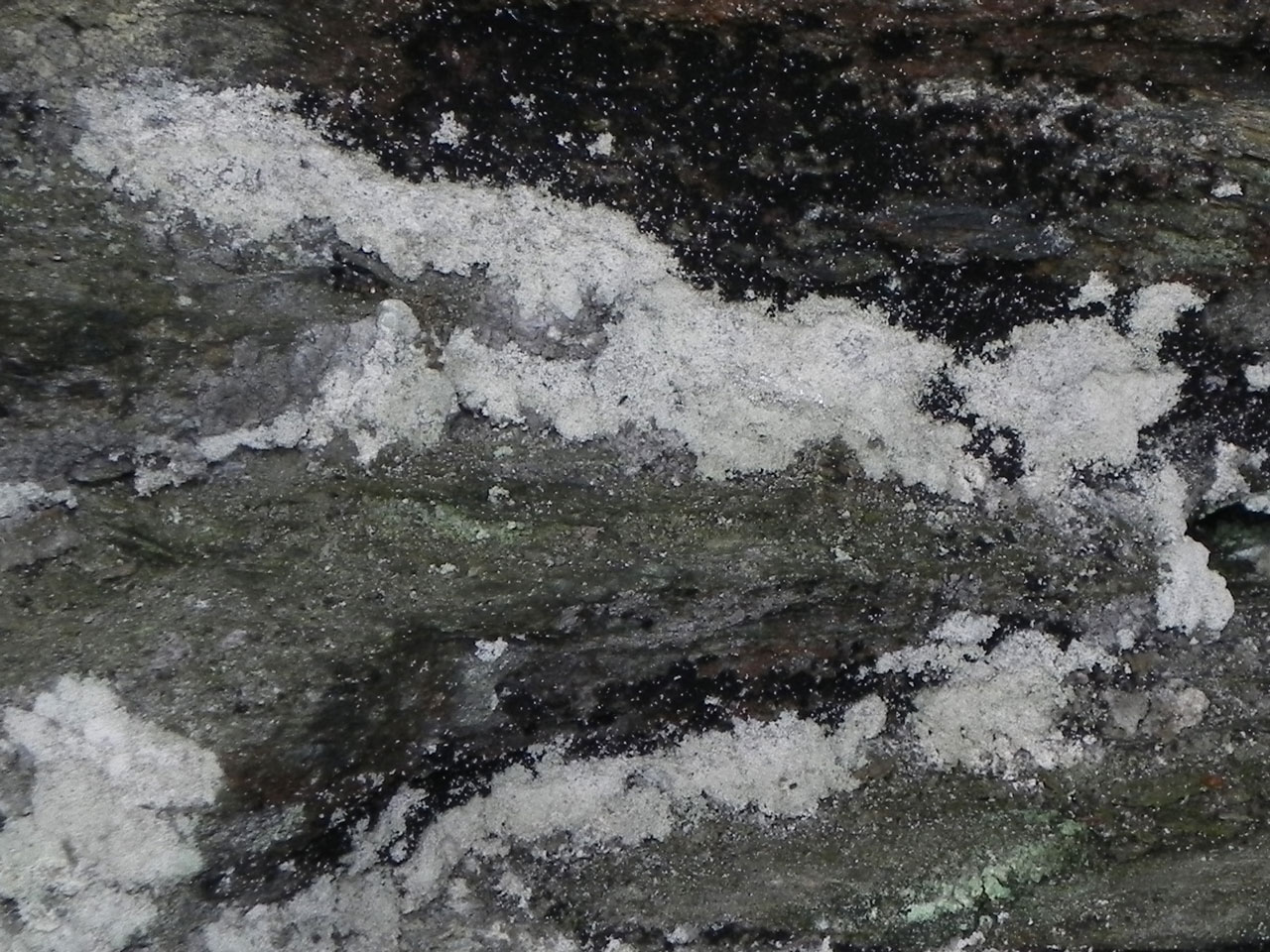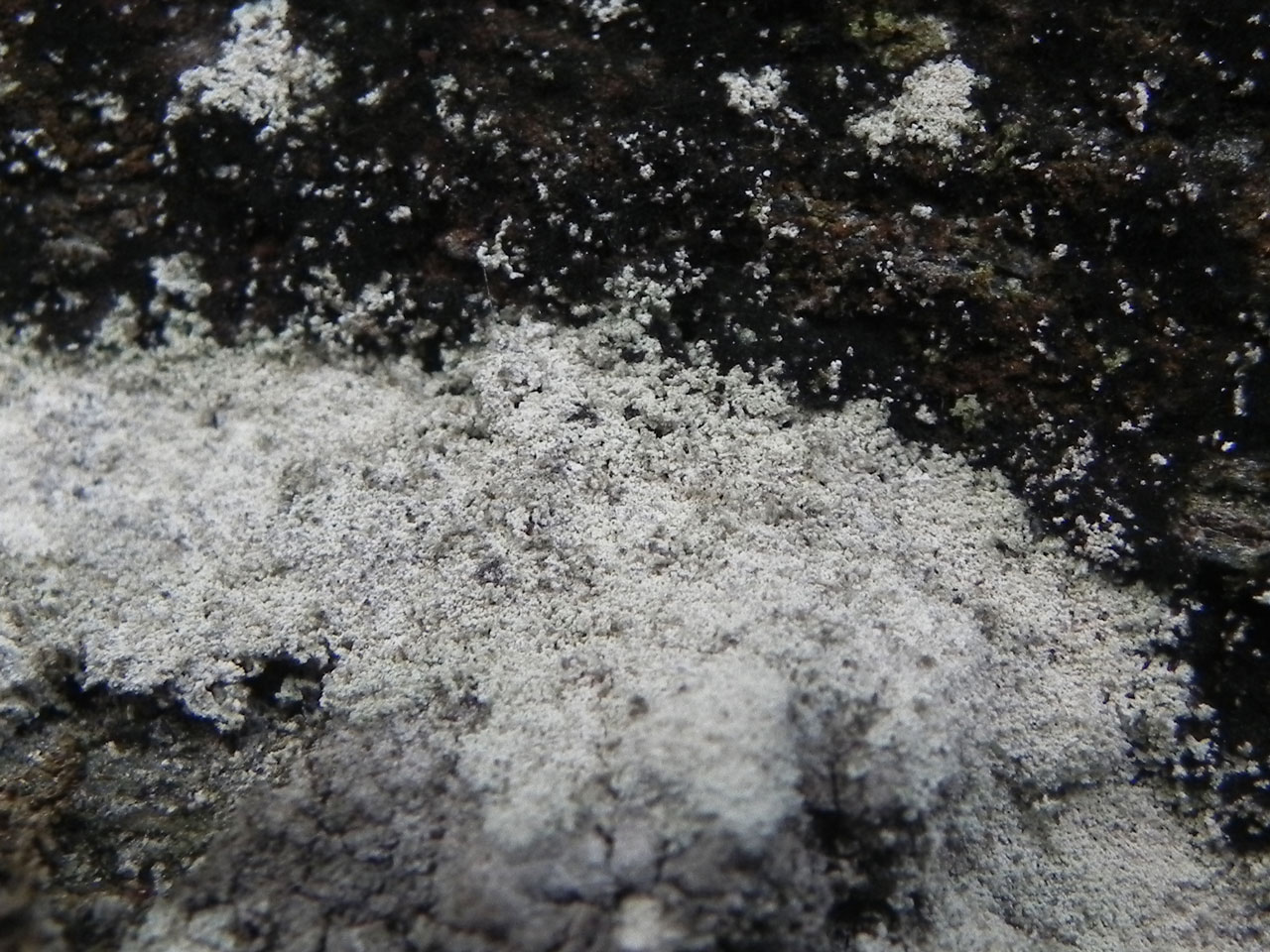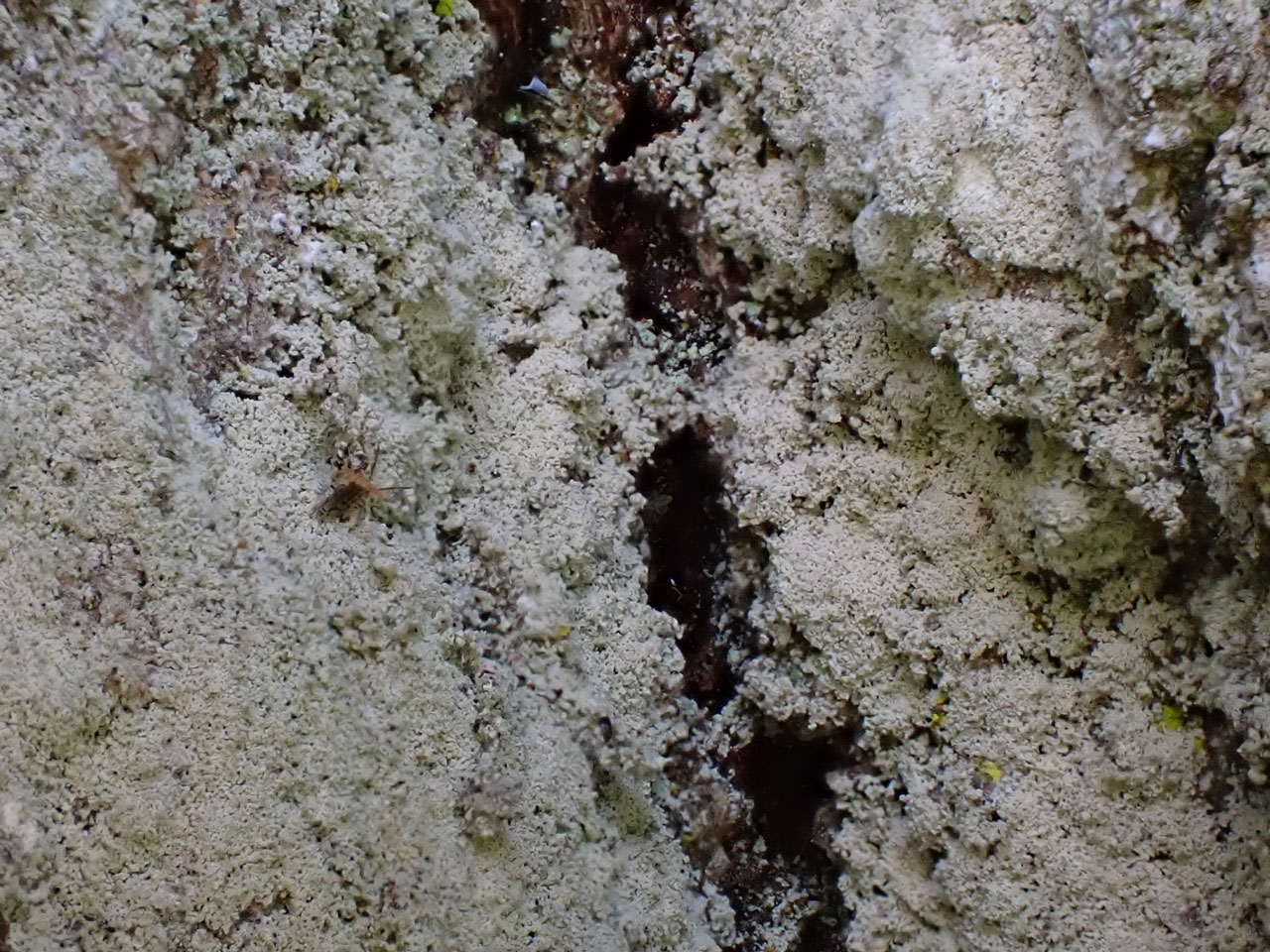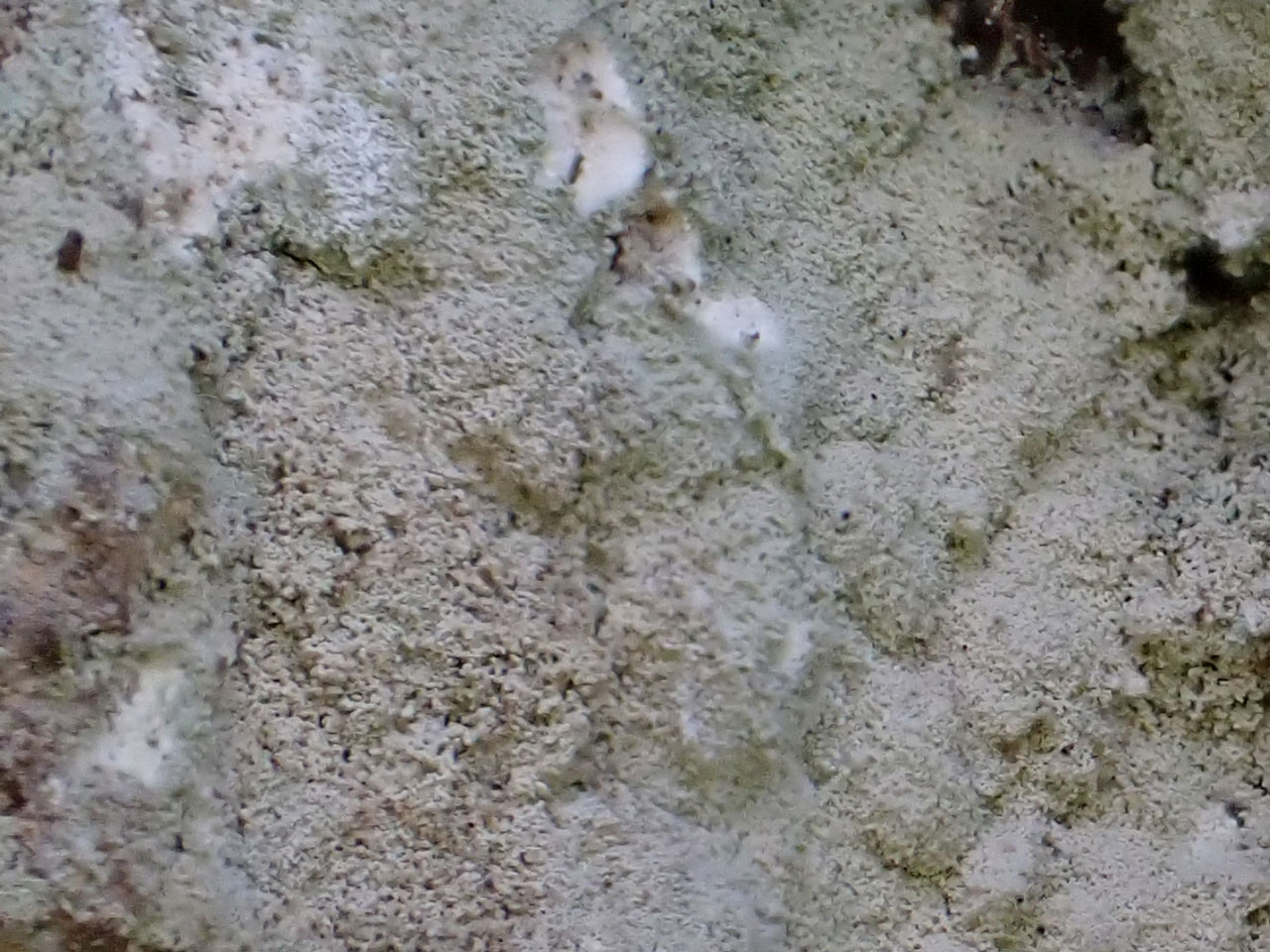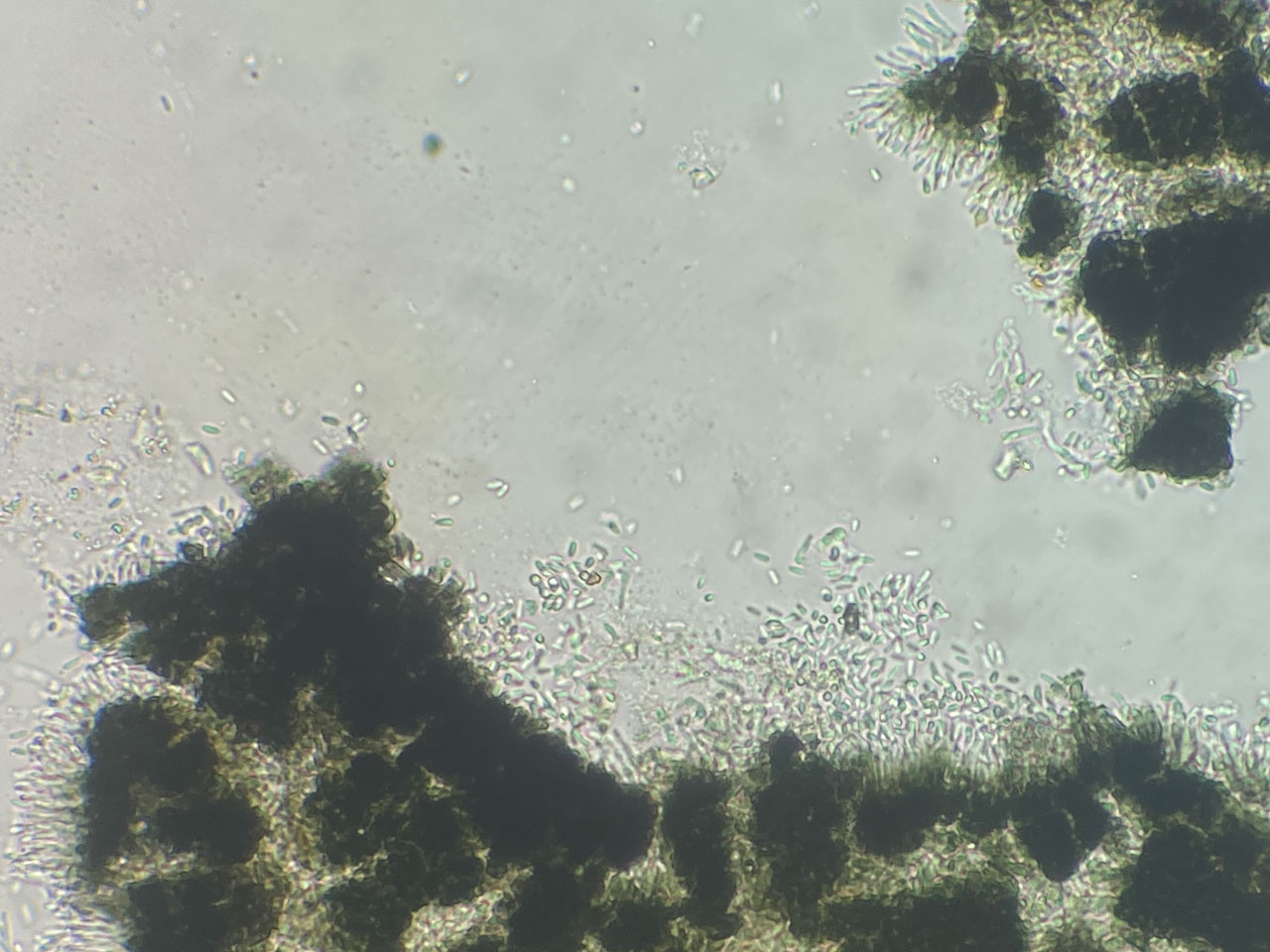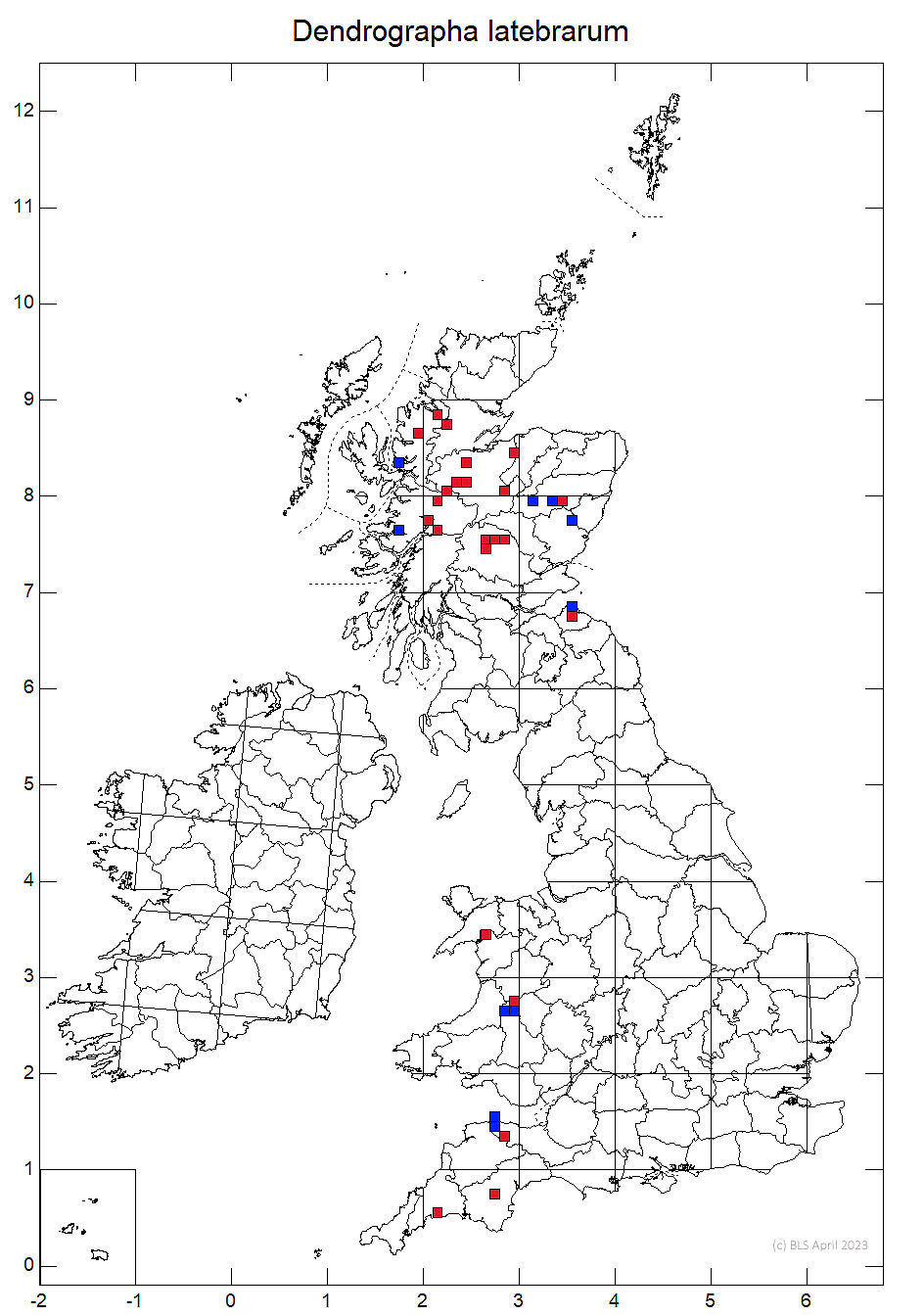Forms loose powdery leprose greyish white thalli on shaded acidic rock under dry overhangs in humid conditions, or rarely on veteran Oak trees. Easily mistaken for a species of Lepraria, but these do not have Trentepohlia as photobiont (although the thallus is so loose it is difficult to scratch orange). Widespread but probably under recorded in the Scottish Highlands, but appears rare to the south. The bright ice-blue UV fluorescence of the medulla is distinctive.
Thallus greyish white, tinged pink-violet, becoming paler in dried collections, often forming conspicuous hemispherical powdery spongy cushions to 5 mm tall and 10 mm diam.; prothallus, when developed, whitish or pale brown, forming a lax, felted mat; thallus of photobiont cells interwoven by coarse hyphae heavily incrusted by crystals. Apothecia unknown, pycnidia recorded once on a veteran Oak; 0.1–0.125m diameter, black wall, gaping, sometimes with an extruded conidia mass, in squash wall brown-black, K+ green; conidia 3–4.5 × 1-1.5 μm, bacilliform, straight, simple. Thallus C–, K–, KC–, Pd–; medulla UV+ ice-blue (lepraric, and ± roccellic acids)
Easily mistaken for a species of Lepraria which, however, do not have Trentepohlia as photobiont. May also be confused with Arthonia arthonioides which has no lichen chemistry. Schismatomma umbrinum occurs in similar habitats, but has a browner more compact thallus, even when fully sorediate, and has a UV+ glaucous medulla.
On very shaded acidic rock under dry overhangs in humid conditions, rarely on veteran Oak trees in old growth woodlands; overlooked.

Widespread in the Scottish Highlands, very rare to the south (E. Lothian, central Wales, Shropshire, Exmoor and Dartmoor). A single location known in Ireland (Glendalough, Co Wicklow).
Widespread in the Scottish Highlands, but very localised to the south and likely vulnerable to over shading and the loss of veteran trees.
Britain: Notable
Wales: Near Threatened
Cannon, P., Aptroot, A., Coppins, B., Ertz, D., Sanderson, N., Simkin, J. & Wolseley, P. (2021). Arthoniales: Roccellaceae, [revision 1] including the genera Cresponea, Dendrographa, Dirina, Enterographa, Gyrographa, Lecanactis, Pseudoschismatomma, Psoronactis, Roccella, Schismatomma and Syncesia. Revisions of British and Irish Lichens 32: 1-22.
Text by Neil A Sanderson based on Cannon et al (2021)
